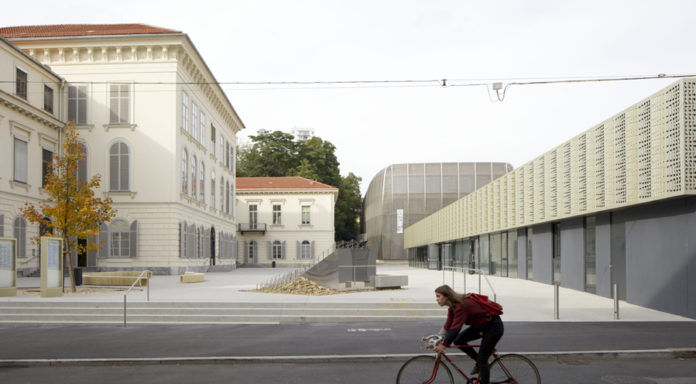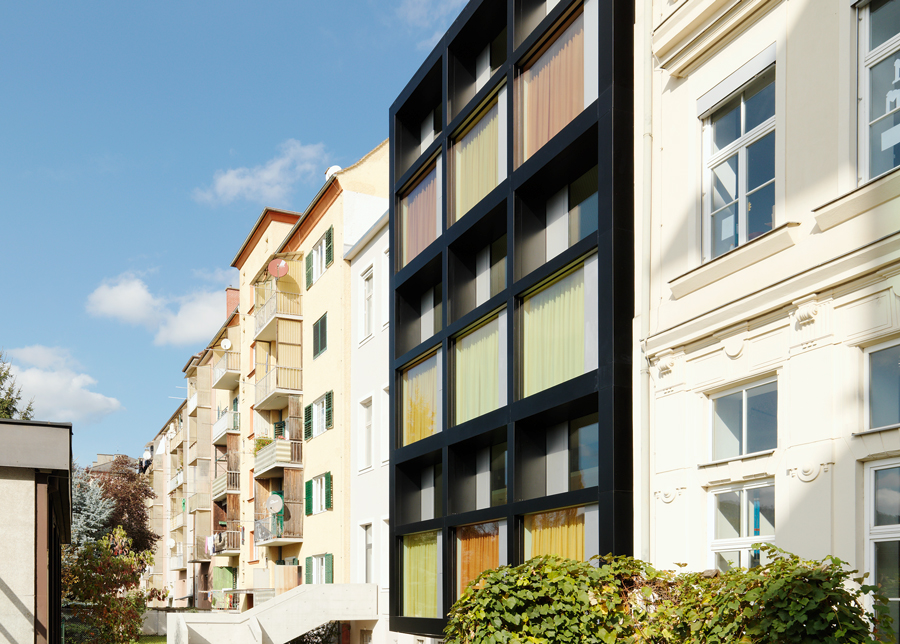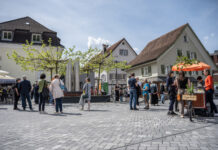
Graz is probably counted among the cities with the largest density of architects – and for good reason.
Graz has a luxury problem. Hardly any other city, relative to its size, is inhabited by as many architects as can be found here. The reasons for this can be found in its history:
The think tank project “Model Styria”, driven by the prematurely deceased creative thinker, free spirit, and politician Bernd Schilcher, incorporated numerous young architects in the 70s and 80s. As a result, the housing policy of the federal state of Styria – among other things – was creatively infiltrated and contemporary architecture suddenly stood in the middle of a committed public discourse. Projects, for example in the field of subsidised housing, were carried out in a way that had been hitherto viewed as utopian. The Sturm und Drang of these years who at the time had newly outgrown the student art room festivals of the architectural institute of the Graz University of Technology have subsequently left behind a multitude of exemplary architectural projects in the city of Graz and in Styria – and not only in housing.

Günther Domenig, Michael Szyszkowitz, Klaus Kada, Volker Giencke, Manfred WolffPlottegg were only a few of the architects and often also university instructors who moulded a revolutionary spirit in the architecture of Graz. To date, the so-called “Grazer Schule” ranks among the most well-known phenomena in architecture, although the protagonists never really wanted this label attributed to them.
The uncompromising gesture and desire for new forms was also found to be attractive to future generations of young architects who stormed the school of architecture in Graz and who later began to work in the architectural agencies of the leading figures of the time.
Meanwhile, nearly two generations of young architects have matured in Graz and the restless young have of necessity also begun to grate on their “ancestors”. The “House of Architecture” has sometimes been a place of what often turned into fierce debates as early as the 90s.
Graz: Young architects interfere
Criticism of the established “top dogs” has of late become significantly louder among the younger architects. As such, the structure and composition of the old town expert commission irritate many of the younger agencies. The online archive of the independent Styrian architecture portal www.gat.st keeps track of this debate well. A primary criticism is that there are no sufficient incompatibility provisions for the members of the architectural community who have been appointed to the commission by the state, resulting in a significant proportion of the projects that have been built in the old town in the recent past being supervised by architectural firms which were themselves members of the commission – often for decades without pause (!).
With the large number of architectural firms in Graz, fair market access conditions – especially for the younger agencies – are also included in this context. This topic perpetuated in a debate that had gone on for several years on the invitation procedures for private architectural competitions, in which the city of Graz, the Civil Engineers’ Chamber, and Chamber of Commerce – after certain “pressure from below” – have agreed on a referral process that also gives younger architectural agencies a chance to be selected. Since then, a number of projects in accordance with this “Graz Model for Architectural Competitions” have been undertaken and carried out. The debate on the correct lottery procedure, however, is still fierce – heated dispute is, after all, inherently part of an architecturally conscious city. However, the competition among the many architects in Graz ultimately enlivens the imagination, and this does not only apply to the building projects actually implemented in the strict sense. In the search for economic concepts for their agencies, a number of architects have ducked into niches in which others have so far operated only occasionally. The fields of activity are steadily spreading: from visual design, to film and media production, district management, journalism, architecture mediation, festival organisers, etc.
Or they simply turn the world upside-down with an old caravan converted into a camera obscura and chug through the country as a “changer of spatial perception”. From this a creative and discourse encouraging amalgam has emerged in Graz in recent years, which has no equal in other cities of comparable size and impresses upon the “spiritual architecture” of the city.

But, yes, the “young Grazers” in architecture obviously build as well. With their projects they conquer places and areas which had hitherto often gone unnoticed, as seen in the case of the “Veranda School” Gabelsberger by tmp.architekten, the architectural quality of which is only visible upon entering the courtyard of the building. Ulrike Tischler and Martin Mechs of tmp.architekten have earned international renown with their school buildings. Their concepts are typically developed in close cooperation with the educational leaders of the schools and are educational concepts cast in architecture for new open-learning methods.
The firm InnoCAD has also tread an independent path in every sense. In order to sever their dependence on exclusively external contracts, they have realised many of their projects as the project developer themselves. Meanwhile, the firm can refer to an impressive list of completed projects – many of them in Graz, including the focal point for every visitor of Graz: the Graz Tourist Information Bureau located in the Styrian Armoury.

A slightly modified form of independent project development – which one might call the “Chicken or Egg Principle” – turns some to Markus Pernthaler with repeated success: with his usual insistent eloquence and strategic skill, he “invents” projects for other building developers, of which they had in most cases not yet thought. Results of this strategy to be seen in Graz: Helmut List Halle, Rondo, and the Science Tower. In addition to these projects, he has also bequeathed the city a district development project, the “Smart City Graz” – readily accessible bordering west of the main train station – in a kind of “washing up” project.
Since the major development boost of the numerous new public buildings in the European Capital of Culture of 2003, a number of important new projects were recently implemented, particularly regarding the universities of Graz, where young local architectural firms were able to prevail against renowned international competitors – including the theater at the Palais of the University of Music and Performing Arts Graz by balloon architekten, and the competition winning design for the new university library by
Thomas Pucher. Pucher was a founding member of the now also highly successful architectural agency LOVE, whose creed is arguably applicable to most young architectural agencies in Graz: “we love doing what we do” – and it shows.
INFO: balloon architekten ZT-OG www.balloon-rgw.at Markus Pernthaler Architekt www.markus-pernthaler.at INNOCAD Architektur ZT GmbH www.innocad.at .tmp architekten www.t-m-p.org Atelier Thomas Pucher ZT GmbH www.thomaspucher.com Haus der Architektur Graz www.hda-graz.at











